23 photos that show how Halloween has evolved since it was popularized in the late 1800s
Gabbi Shaw

- Though Halloween was first celebrated as a pagan festival 2,000 years ago, it really began to resemble what we celebrate today in the late 1800s.
- Over the years, costumes have become both more pop culture dependent and more realistic.
Halloween originated from a Celtic festival called Samhain, which was celebrated 2,000 years ago and centered around lighting bonfires and wearing costumes to ward off spirits and fairies. Back then, costumes acted as protection, not just an excuse to show off your Pinterest skills.
Clearly, Halloween has changed quite a bit not just since it was Samhain, but since it became a popularized secular holiday in the late 19th century. From the 1870s to the 1890s, people mostly made their own witch and ghost costumes, as mass-produced paper costumes and buckram masks didn't hit stores until the early 1900s. In the present, intricate pop culture costumes reign supreme — but it remains to be seen how Halloween is celebrated in the time of COVID-19.
Keep scrolling to learn about how All Hallows' Eve has transformed, and see the changes for yourself.
While Halloween was originally celebrated as the Celtic festival Samhain, the holiday as we know it today really took form around the late 1800s.
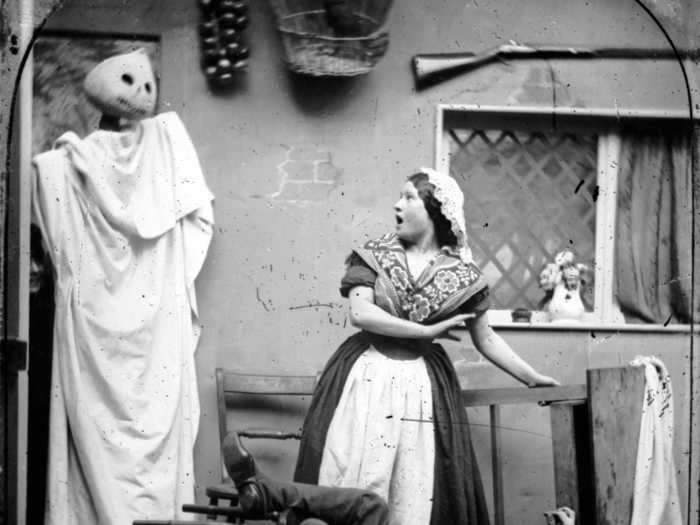
Samhain centered around lighting bonfires and wearing costumes to ward off spirits and fairies. As Encyclopedia Britannica notes, "it was a time fraught with danger, charged with fear, and full of supernatural episodes."
By the time it reached America, it had become a secular holiday. In the late 1800s, since store bought wasn't really an option, people made their own costumes, focusing on the most recognizable symbols of Halloween, like witches or ghosts.
Bobbing for apples has been a popular Halloween custom since the 1800s.
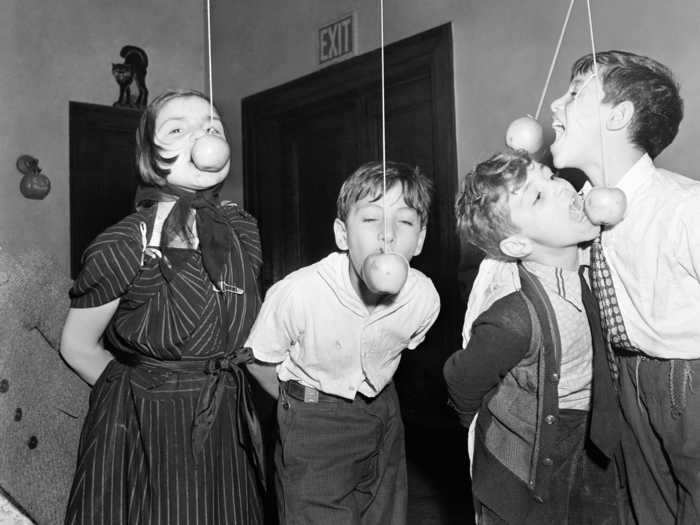
Bobbing for apples is a game in which participants try to bite apples without using their hands — probably an activity that will go on pause during the coronavirus pandemic.
According to History.com, it originated in the 1800s, and had romantic roots. One superstition held that whoever bit their apple first would be the first to marry, while another claimed that if a girl slept with her bitten apple underneath her pillow, she'd see her future soul mate in her dreams.
Trick-or-treating was mentioned for the first time in 1927, but seems to have been around longer.
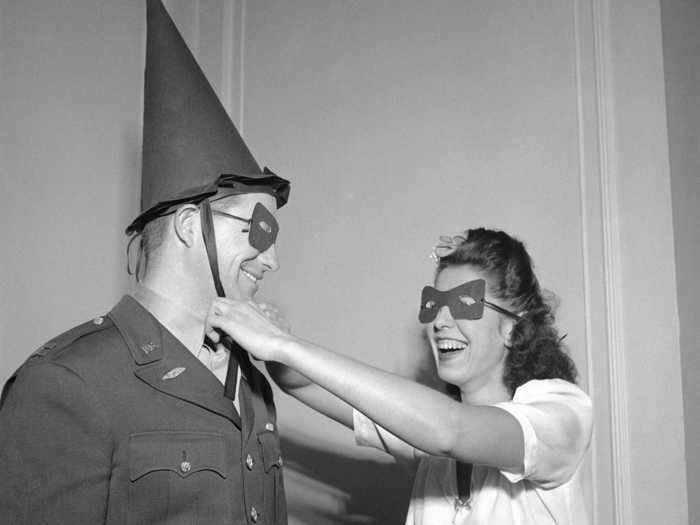
The phrase "trick or treat" was reportedly first used in 1927 by a Canadian journalist who wrote, "the youthful tormentors were at back door and front demanding edible plunder by the word 'trick or treat,' to which the inmates gladly responded and sent the robbers away rejoicing," according to the Sun.
Pumpkins, in general, are a sign of both fall and Halloween, and jack-o'-lanterns date back as far as the early 1800s.
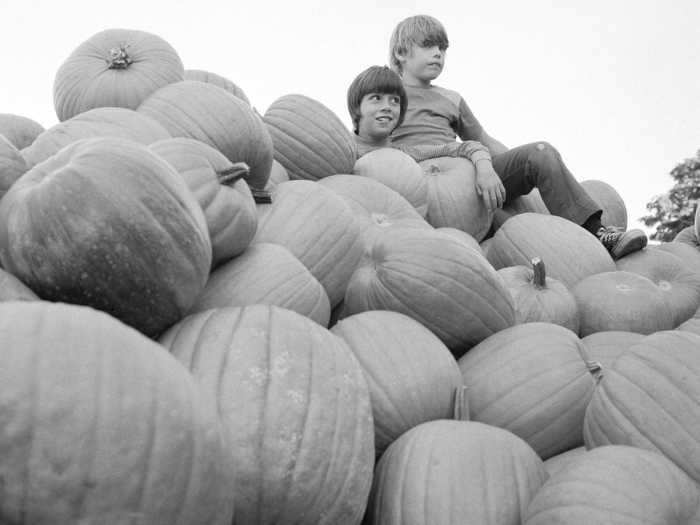
Jack-o'-lantern, according to Merriam-Webster, has been the term for a hollowed out pumpkin with a light inside since the 1800s.
The most pervasive theory on how jack-o'-lanterns became associated with Halloween is that it was a popular prank used to scare people.
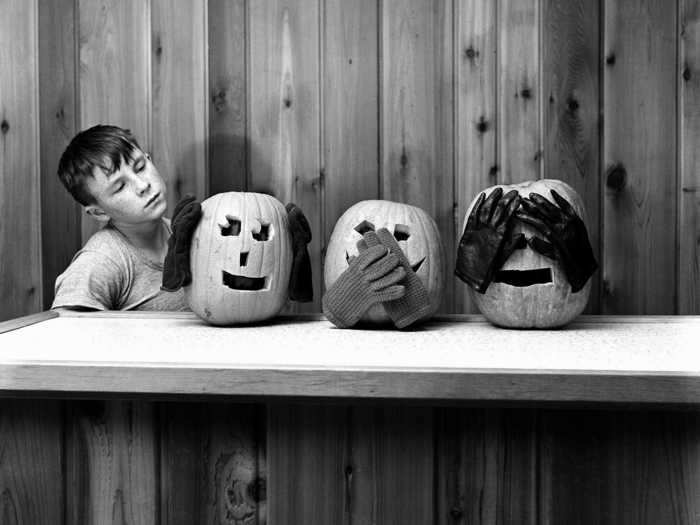
Apparently, kids would carve spooky faces into them, light them, and then run around with them to spook people. Per Time, "The so-called 'carved pumpkin trick' became so popular that there were even how-to articles printed in magazines as early as 1842."
Pranks are also a distinctly Halloween-y activity.
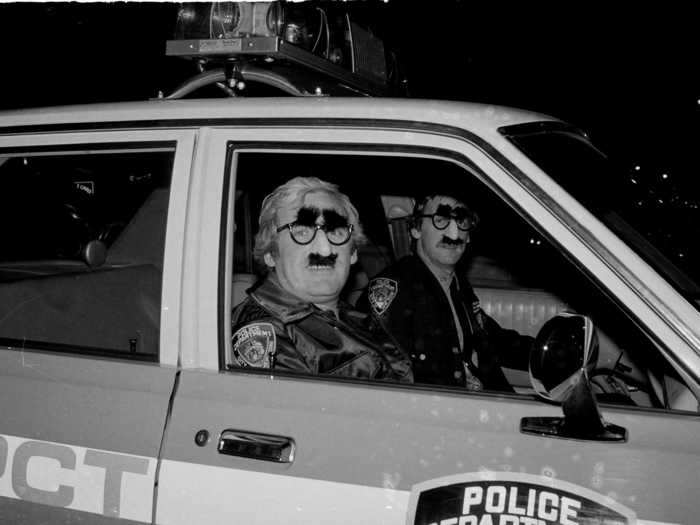
Some regions in the US don't play pranks on actual Halloween night — they pull them the night before, on what's called Mischief Night.
In the 1900s and 1910s, Victorian America became fascinated by the Far East and anything considered "exotic."
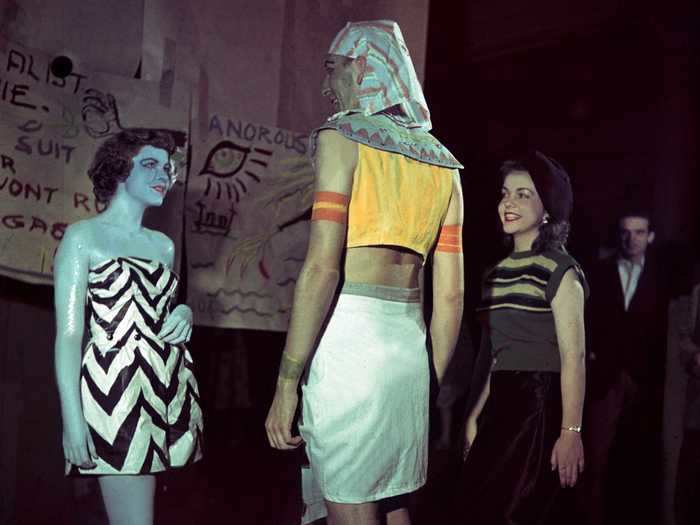
As Halloween historian Lesley Bannatyne previously told Insider, "Anything that was exotic and in another world, either on this planet or another dimension, was really interesting."
Cats, much like today, were a popular choice in the 1920s.
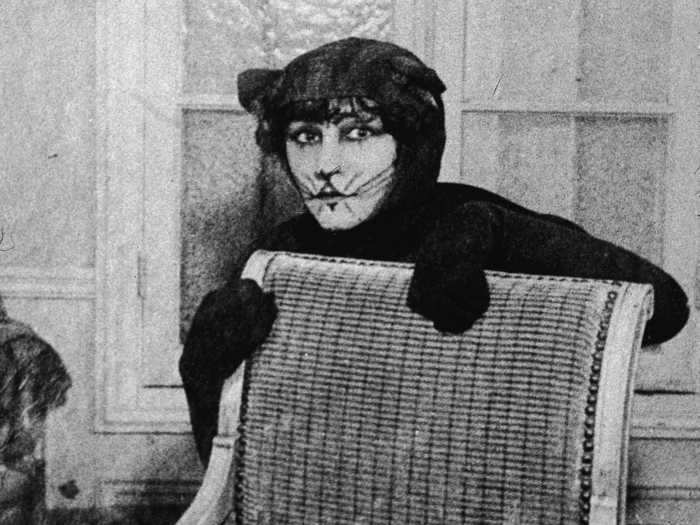
It's a simple costume to put together — no wonder it's lasted into 2020.
Beloved costumes like Minnie Mouse have evolved since the '30s.
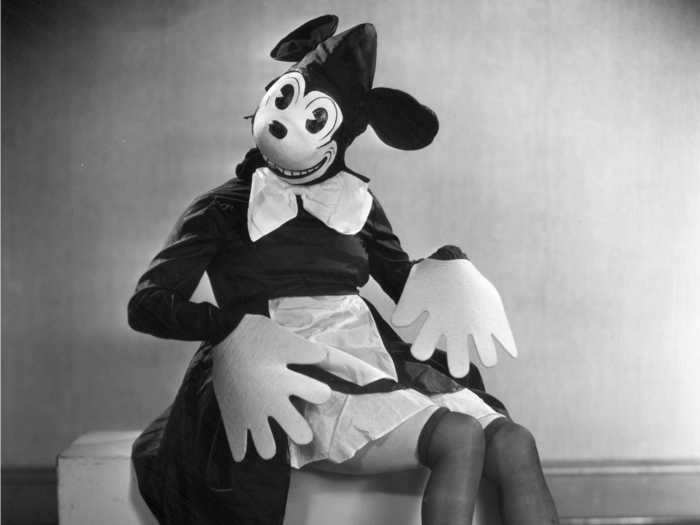
Thankfully, Minnie costumes today are far less creepy.
Ready-to-wear boxed costumes became popular in the 1940s.
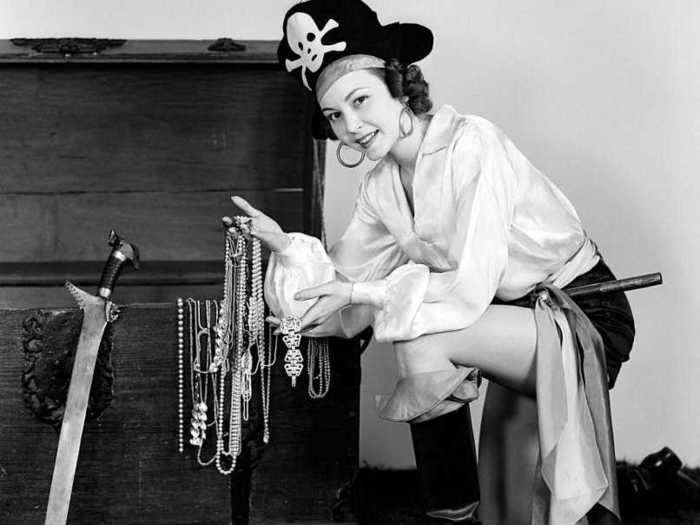
According to Bannatyne, these costumes were considered a luxury in the 1930s, and only became more affordable after World War II.
In the '50s, cowboy costumes were all the rage — the space age had yet to take hold.
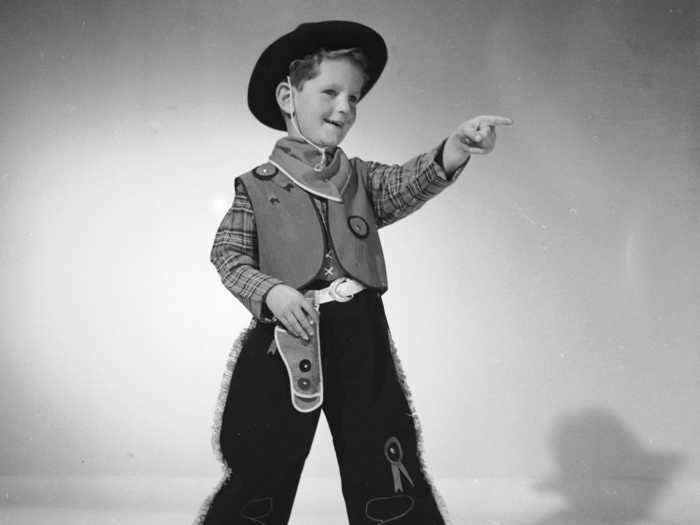
Westerns were extremely popular in the '50s, like "The Searchers," "High Noon," and even earlier ones such as "The Treasure of Sierra Madre."
"Popular culture went from radio to television in the '50s, and all of a sudden everybody is on the same page," Bannatyne said. "You couldn't have standard Halloween costumes that everybody knew about until we had a common culture."
Masks were a far cry from the hyper-realistic ones we see today.
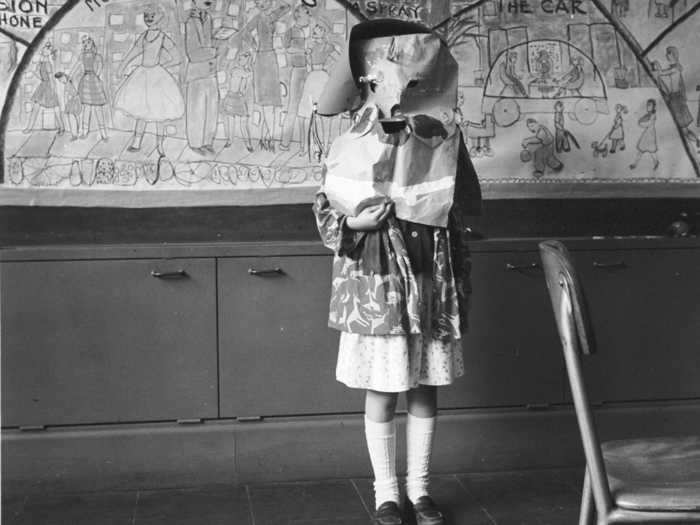
Though we'd go so far as to say this crude, handmade mask is just as eerie.
As we moved into the '60s, comic book characters became a popular costume choice.
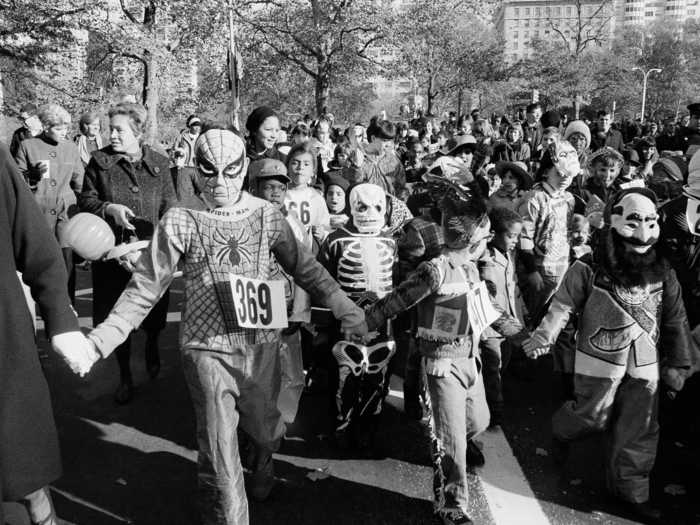
Yep, there's Spider-Man front and center.
People started dressing as their favorite stars.
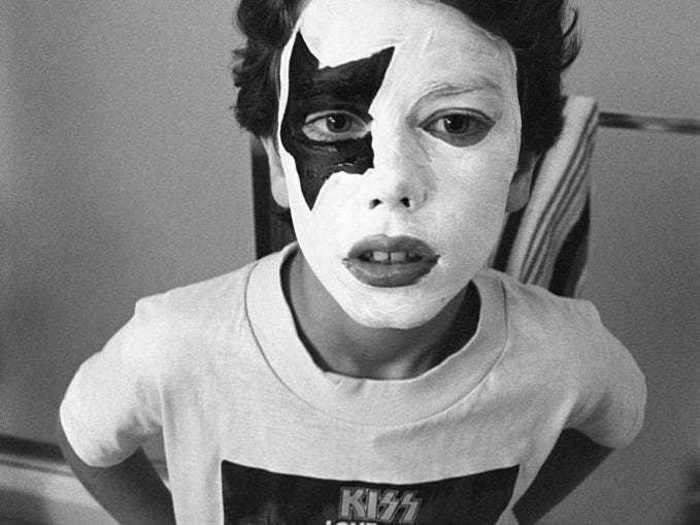
This trend has continued into 2020, as well.
Like everything else in the '80s, the costumes became brightly colored and flamboyant.
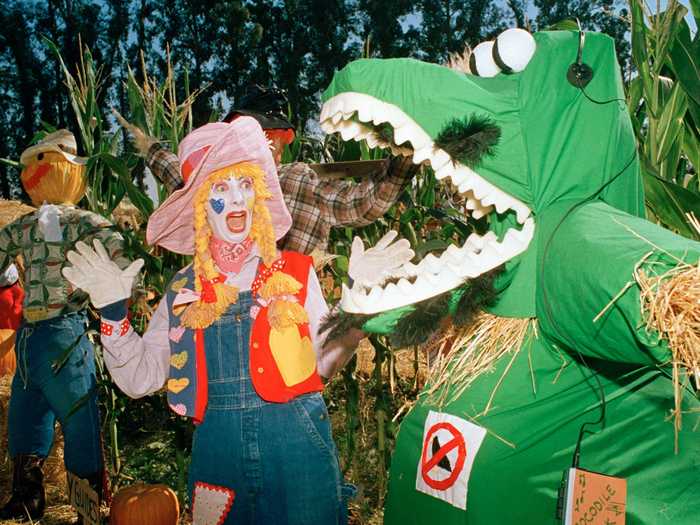
There are more than a few '80s trends that we definitely don't miss.
"A Nightmare on Elm Street 5: The Dream Child" was released shortly before Halloween in 1989, and kids were lining up to dress as the sleep demon.
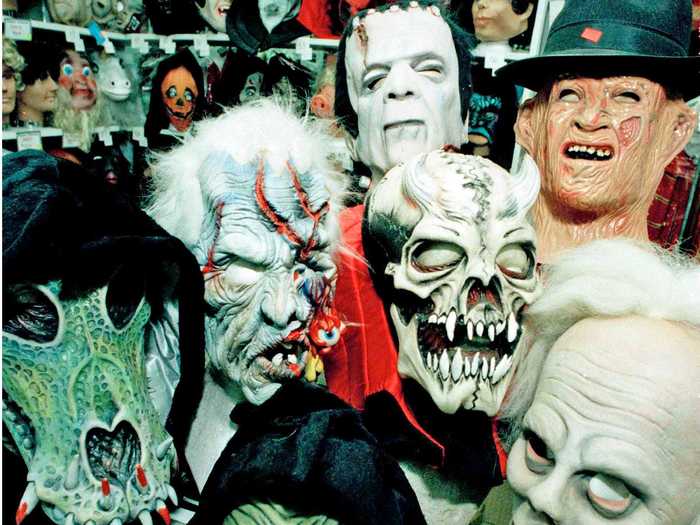
Costumes were getting more realistic — and scarier.
Pop culture continued to play a part in Halloween costumes throughout the '90s, like this Dalmatian costume.
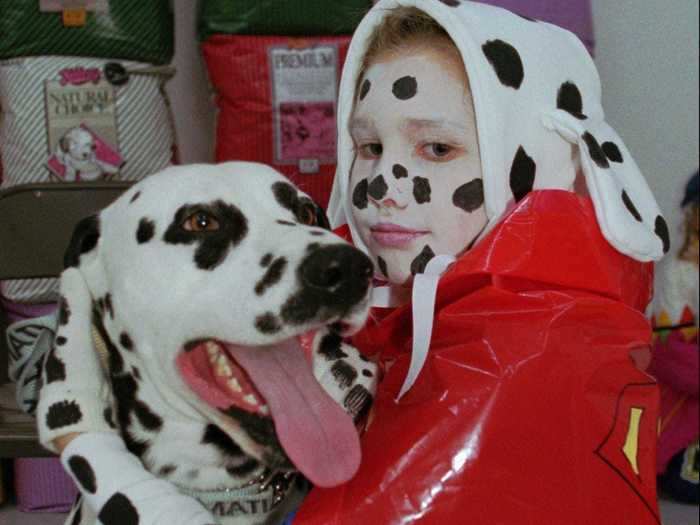
The live-action "101 Dalmatians" movie was released that same year.
Even politicians get into the fun, like when former Vice President Al Gore and his wife Tipper dressed up as the Beast and Belle from "Beauty and the Beast" in 1995.
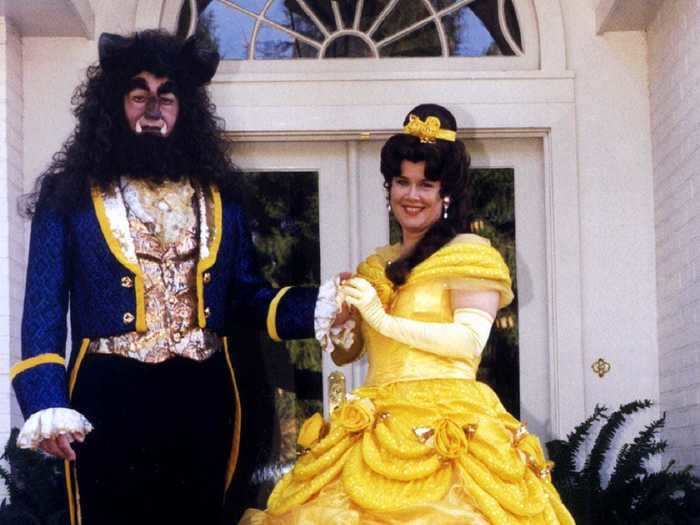
Traditionally, the White House always goes all out for Halloween. The Gores' costumes were quite on trend, as "Beauty and the Beast" had only been released a few years prior.
Beginning around 1982, fears of drug-, poison-, or weapon-laced candy took hold.
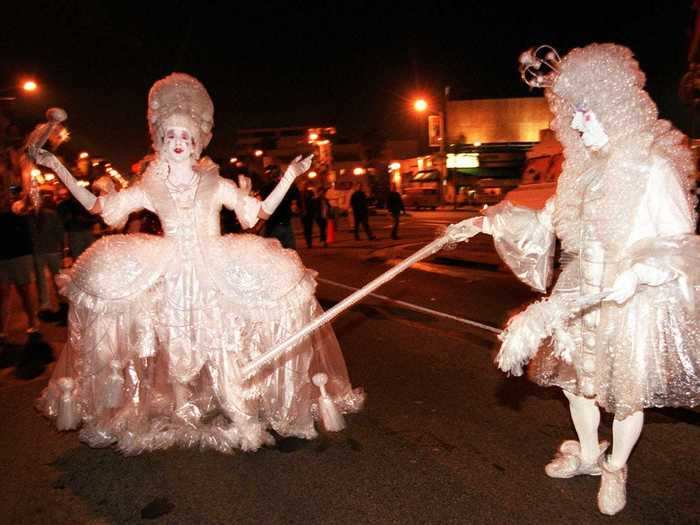
While this fear existed for a while, according to Snopes, it kicked into high gear in 1982, when seven people died from potassium cyanide-laced Tylenol in Chicago. By the '90s, it had become a full-blown panic among parents of trick-or-treating children.
After 9/11, some Americans took the time to commemorate the tragedy less than two months later.
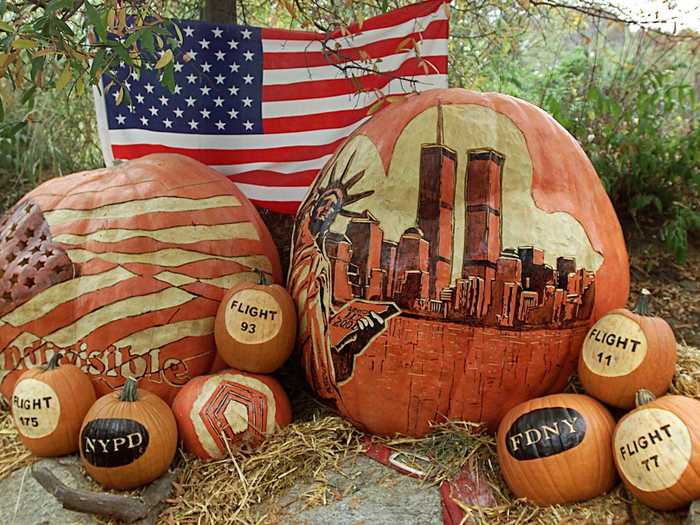
NBC reported that year that some parents were afraid to let their children trick or treat, and that they had re-considered particularly gory or scary costumes.
In the 2000s, "sexy" versions of iconic costumes became popular, like this "sexy" cop.
Over the years, there's been sexy Patrick from "SpongeBob Squarepants," a sexy goldfish, and even sexy Big Bird from "Sesame Street."
Concerns about cultural appropriation in Halloween costumes have become mainstream recently.
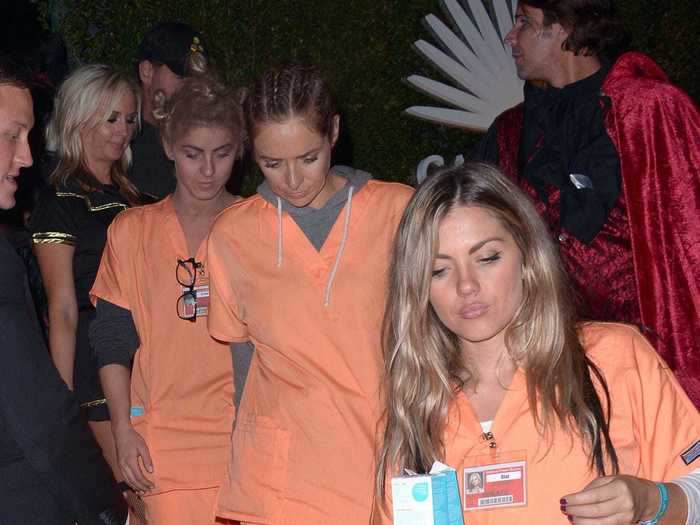
"[Halloween] has always gone off the rails a little bit, but people are much more aware of that now," Bannatyne said, citing the last six years as a turning point.
Today, there's an emphasis on going all out, like Heidi Klum and her now-husband Tom Kaulitz as Shrek and Princess Fiona in 2018. Though, with parties being less frequent this year, we'll see what Halloween looks like this year.
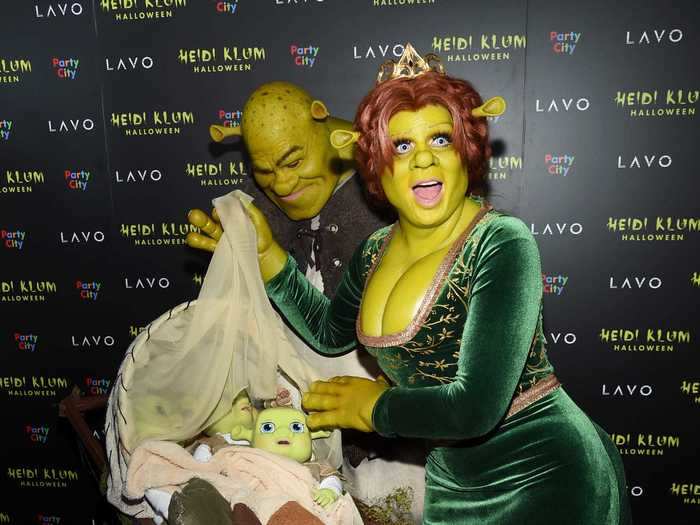
Klum is a Halloween icon. Every year she brings it to another level.
- Read more:
- The most popular Halloween costumes over the past 150 years — and the fascinating history behind how costume trends have changed
- THEN AND NOW: How 10 classic Halloween costumes have changed over time
- 21 creative Halloween costumes you can make with things in your closet
- 11 amusement parks around the US that go all-out for Halloween
READ MORE ARTICLES ON
Popular Right Now
Popular Keywords
Advertisement